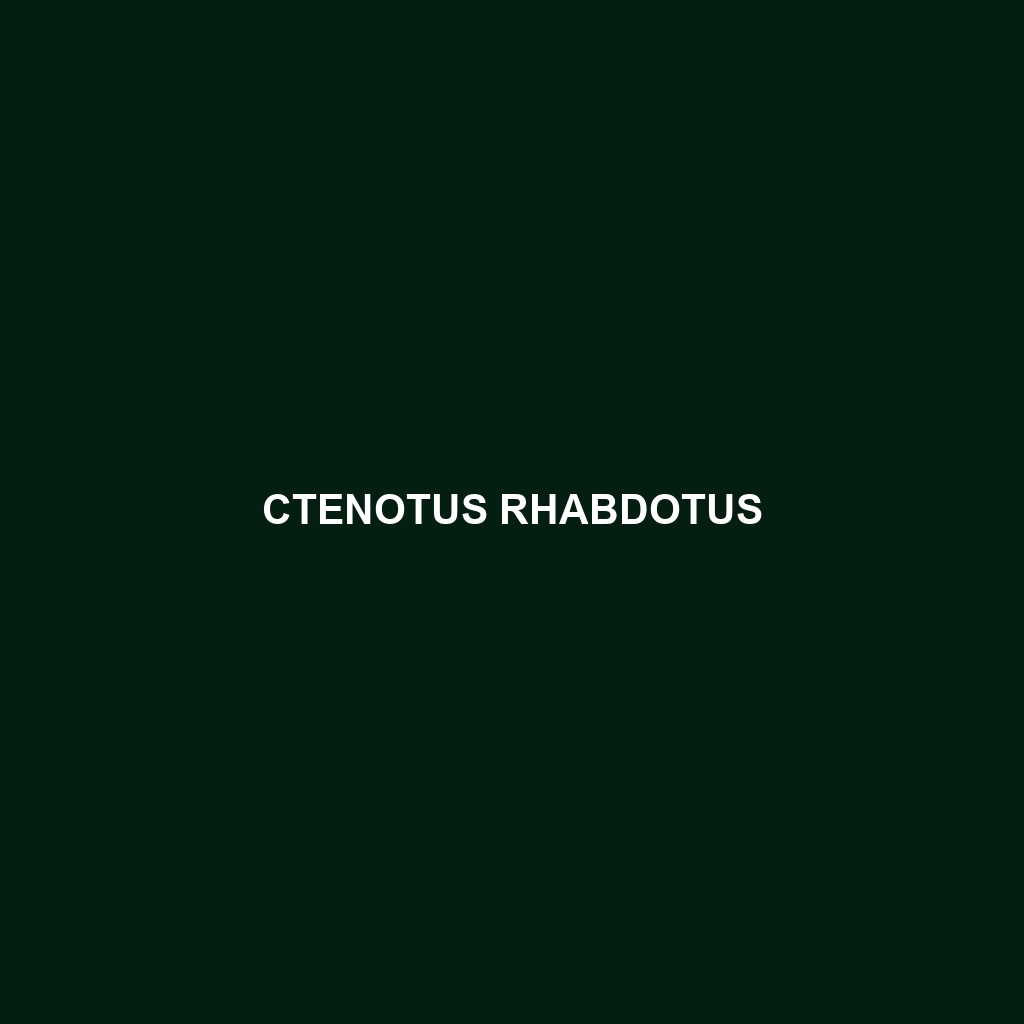Ctenotus rhabdotus – A Detailed Overview
Common Name: Ctenotus rhabdotus
Scientific Name: Ctenotus rhabdotus
Habitat
Ctenotus rhabdotus, commonly known as the Stripe-tailed Ctenotus, is primarily found in Australia, particularly in regions of southern Queensland and northern New South Wales. This species typically inhabits grasslands, open woodlands, and heathlands, where sandy to loamy soils offer suitable burrowing environments. These lizards thrive in habitats that feature a mix of vegetation types, allowing them to access both shelter and foraging opportunities.
Physical Characteristics
Stripe-tailed Ctenotus can grow to an average length of 10 to 20 centimeters. They exhibit a distinctive color pattern, characterized by a light brown to grayish body adorned with striking dark stripes that run lengthwise down their back. One of their most notable features is their elongated, slender shape, which aids in their swift movement across the ground. The stripes provide effective camouflage against predators in their native habitat.
Behavior
Ctenotus rhabdotus is primarily diurnal, meaning it is active during the day. These lizards are known for their quick movements and ability to dart away when threatened. They often bask in the sun to regulate their body temperature, and they tend to occupy burrows or leaf litter for shelter. Social behaviors can include territorial displays, especially among males during mating season.
Diet
The diet of Ctenotus rhabdotus is comprised mainly of insects and other small invertebrates. Common food sources include ants, beetles, and spiders. Their feeding habits reflect their role as insectivores in their ecosystem, where their predation helps control insect populations.
Reproduction
Ctenotus rhabdotus typically breeds in the warmer months, with mating occurring in spring. Females lay eggs in underground nests, where they remain protected from predators. Clutch sizes can vary, usually consisting of between 4 to 10 eggs. The young lizards emerge after a period of incubation, fully formed and capable of independent survival shortly thereafter.
Conservation Status
The conservation status of Ctenotus rhabdotus is currently categorized as Least Concern according to the IUCN Red List. However, habitat destruction and climate change pose potential threats to their populations. It is crucial to monitor their habitats to ensure the species continues to thrive in its natural environment.
Interesting Facts
One fascinating aspect of Ctenotus rhabdotus is its ability to mimic the movements of other species, which may help it evade predators. Additionally, this species is known for its impressive speed, making it one of the quicker lizards in its range, adept at escaping threats.
Role in Ecosystem
Ctenotus rhabdotus plays a vital role in its ecosystem as both a predator and prey. By feeding on various insects, it helps maintain ecological balance and supports biodiversity. At the same time, it serves as a food source for larger predators, contributing to the food web dynamics within its habitat.
